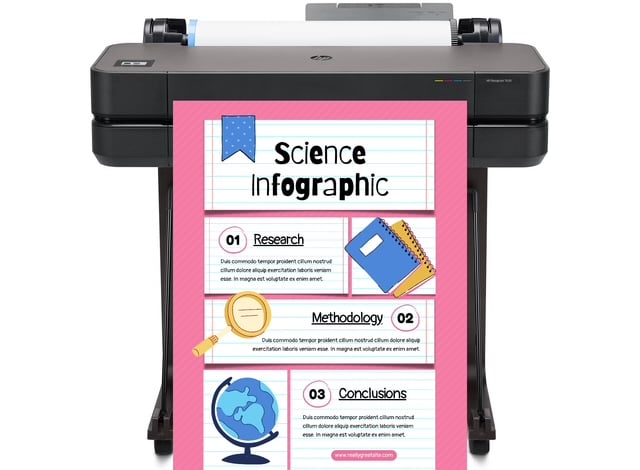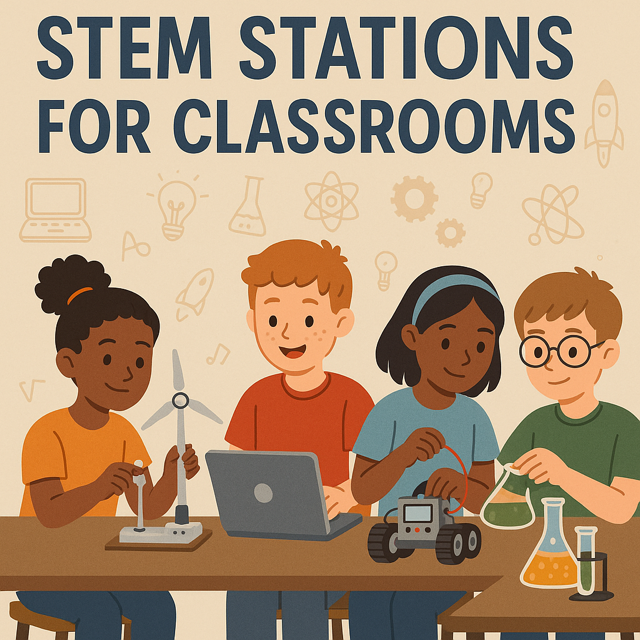
DISCOUNTED EDUCATION PRICING! CALL 1-877-891-8411. We Gladly Accept School Purchase Orders!

In today’s rapidly evolving world, STEM (Science, Technology, Engineering, and Mathematics) education is more critical than ever. As technology reshapes industries and economies, equipping students with STEM skills ensures they are ready to tackle 21st-century challenges. But how do educators make STEM engaging, accessible, and effective? Enter STEM stations for classrooms—dynamic, hands-on learning hubs that spark curiosity, promote collaboration, and build essential skills through experiential learning.
STEM stations transform traditional classrooms into interactive environments where students explore real-world problems, experiment with solutions, and develop a lifelong love for learning. This comprehensive guide dives into the importance of STEM education, explains how STEM stations work, provides practical ideas for setting them up, and answers common questions to help teachers create impactful learning experiences. Let’s explore why STEM stations are the key to unlocking student potential and how they can help your classroom thrive!
STEM stations are designated areas in a classroom where students engage in hands-on, inquiry-based activities focused on science, technology, engineering, and mathematics. Each station typically features a specific task or challenge that encourages students to apply STEM concepts collaboratively or independently. These stations are designed to be flexible, catering to various grade levels and subjects, and can range from no-tech activities like building structures with craft materials to high-tech tasks like coding with robotics kits.
STEM education is vital for preparing students for a future where 80% of jobs will require technological proficiency, according to the U.S. Bureau of Labor Statistics. Beyond career readiness, STEM fosters critical thinking, problem-solving, and creativity—skills that are essential in any field. The National Science Teaching Association (NSTA) emphasizes that STEM education integrates these disciplines to make learning “real” and relevant, connecting classroom content to real-world applications.
STEM stations amplify these benefits by creating an experiential learning environment. They allow students to explore concepts through trial and error, collaborate with peers, and develop a strong STEM identity—how they see themselves in relation to these subjects. This is particularly crucial for underrepresented groups, such as girls and students of color, who may face societal barriers in pursuing STEM fields. By introducing STEM early, stations help bridge opportunity gaps and promote inclusivity.
STEM stations operate on a rotation model, where students move between different activities during a class period. This approach, often called a “station rotation model,” keeps students engaged by offering variety and hands-on learning opportunities. According to Naomi Meredith, a K-5 STEM teacher, a typical setup might include four stations, each corresponding to one letter of STEM (Science, Technology, Engineering, Math), with a mix of tech and no-tech activities to maintain student interest.
Creating engaging STEM stations requires thoughtful planning. Below are four station ideas, each aligned with a STEM discipline, that can be adapted for elementary, middle, or high school classrooms. These activities are designed to be cost-effective and accessible, using materials commonly found in schools or affordable kits.
Objective: Understand that air takes up space and has measurable properties.
Materials: Balloons, plastic bottles, straws, water, and worksheets.
Activity: Students conduct experiments to observe air’s properties, such as inflating a balloon inside a bottle to see how air pressure works. They record observations and discuss findings in small groups. This aligns with the National Research Council’s emphasis on student-led discovery to change conceptual thinking. Tip: Provide a whiteboard for students to sketch their observations, reinforcing visual learning.
Objective: Introduce basic coding concepts through hands-on programming.
Materials: Robotics kits (e.g., Blue-Bot or Code & Go Mouse) or free online platforms like Code.org.
Activity: Students program a robot to navigate a simple maze or complete a task, such as moving to specific coordinates. This activity builds digital literacy and connects to real-world applications like robotics engineering. Tip: Use a teacher-led station to introduce coding basics for beginners, ensuring all students feel confident.
Objective: Apply engineering design principles to construct a stable structure.
Materials: Popsicle sticks, glue, string, and weights (e.g., small books).
Activity: Students work in teams to design and build a bridge that can hold a specific weight, following the engineering design cycle (imagine, plan, create, test, improve). This encourages creativity and problem-solving, as noted in Dr. Jacie Maslyk’s work on STEM in early grades. Tip: Display a poster with the engineering design cycle to guide students through the process.
Objective: Use math to analyze real-world data.
Materials: Graph paper, rulers, and a dataset (e.g., weather data or classroom survey results).
Activity: Students create graphs to analyze data, such as plotting temperature changes over a week. This connects math to real-world applications, a key STEM teaching strategy. Tip: Encourage students to present their graphs to the class, fostering communication skills.
STEM stations are not just a teaching tool—they’re a necessity in today’s educational landscape. Here’s why they’re critical for classrooms:
The World Economic Forum predicts that 65% of children entering school today will work in jobs that don’t yet exist, many in STEM fields. Stations expose students to skills like coding, data analysis, and engineering design, preparing them for careers in robotics, AI, and more.
STEM stations encourage students to tackle open-ended problems, promoting critical thinking. For example, designing a traffic-safe city model requires students to think creatively and iteratively, as highlighted in a Hong Kong study on early childhood STEM.
STEM stations create opportunities for all students to engage, regardless of background. By using mixed-gender groups and inclusive activities, teachers can ensure that girls and students of color see themselves as “STEM people,” addressing the underrepresentation of these groups in STEM fields (only 27% of STEM workers are women, per Pew Research).
Stations foster curiosity and independent exploration, encouraging students to pursue STEM outside the classroom. For instance, a student inspired by a robotics station might explore coding apps at home, nurturing a lifelong passion.
STEM stations boost engagement, collaboration, and critical thinking while connecting classroom learning to real-world applications. They also support inclusivity by providing hands-on opportunities for all students.
Set clear expectations and use a rotation schedule to keep students on task. Naomi Meredith suggests incorporating a teacher-led station to provide guidance and address questions.
Absolutely! Early childhood teachers report success with STEM stations, as young learners thrive in hands-on, exploratory environments. Activities like building with craft materials or simple coding games are ideal for preschool and elementary students.
Many STEM stations can be created with low-cost materials like paper, straws, or recycled items. Free online tools like Khan Academy or Code.org also provide accessible technology options.
Use rubrics to evaluate problem-solving, collaboration, and application of STEM concepts. Student reflections or group presentations can also assess understanding.
A third-grade teacher in Ohio implemented a STEM station where students built wind-powered vehicles using straws and index cards. By rotating through science (exploring wind force), technology (researching aerodynamics online), engineering (building the vehicle), and math (measuring distances), students improved their problem-solving skills and engagement, with 90% reporting they “loved” the activity.
A middle school in California used robotics kits in a technology station, where students programmed robots to navigate obstacle courses. This led to a 20% increase in students expressing interest in computer science careers, demonstrating the power of hands-on STEM.
STEM stations are a powerful tool for bringing the science of learning to life. By fostering curiosity, collaboration, and critical thinking, they prepare students for a future where STEM skills are non-negotiable. From building bridges to coding robots, these stations make abstract concepts tangible, spark creativity, and empower every student to see themselves as a future innovator. As educators, embracing STEM stations means investing in a generation of problem-solvers who will shape a brighter, more innovative tomorrow.
Start small—try one station, like a science experiment or a math challenge, and watch your students’ excitement grow. Explore resources like those below to deepen your STEM teaching, and let’s ignite a passion for learning in every classroom!
Call to Action: Share your favorite STEM station idea in the comments, or explore these resources to start building your own STEM classroom today!